Some Clever Space-Saving Hacks for Tiny Homes
Living in a tiny home requires creativity and smart design choices to make the most of limited space. Here are 15 ingenious space-saving hacks to help you maximize every square inch of your tiny home.
1. Utilize Vertical Space

In a tiny home, floor space is at a premium, so look up! Vertical storage solutions such as tall bookshelves, wall-mounted cabinets, and hanging organizers can free up floor space and keep your home clutter-free. Consider installing shelves that extend all the way to the ceiling for maximum storage capacity.

Using vertical space doesn’t just mean shelves and cabinets. Think about hooks for hanging pots and pans in the kitchen, or pegboards for tools and accessories. This can transform your walls into functional storage areas, keeping items accessible without taking up valuable counter or floor space.
Don’t forget about furniture that can double as vertical storage. Tall wardrobes, slim armoires, and even lofted beds with built-in shelves underneath can provide ample storage without encroaching on your living area. The key is to make every inch count by using the height of your walls effectively.

2. Invest in Multi-Functional Furniture

When space is limited, every piece of furniture needs to earn its keep. Multi-functional furniture, such as sofa beds, extendable dining tables, and ottomans with storage, can significantly enhance the functionality of your tiny home. These pieces adapt to your needs, providing comfort and practicality without occupying too much space.

A sofa that converts into a bed can save you the need for a separate guest room, while an extendable dining table can accommodate more guests when needed and then be compacted to save space. Look for furniture that can change its form or function to suit different purposes throughout the day.
Additionally, storage ottomans, benches with hidden compartments, and modular furniture systems offer great versatility. These items not only provide a place to sit or sleep but also offer storage solutions that keep your home organized and clutter-free, making the most of every available inch.

3. Opt for Foldable and Collapsible Items
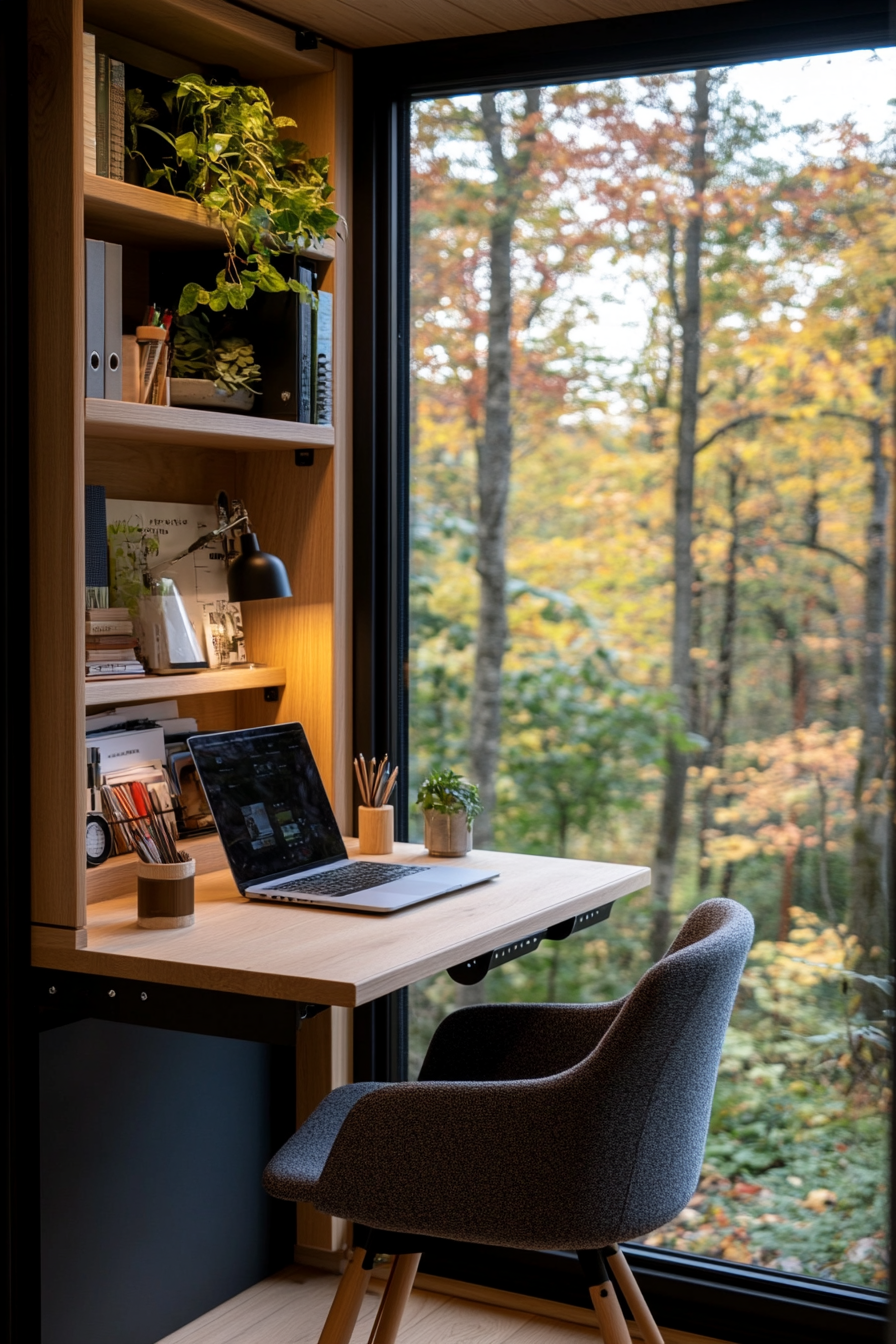
Foldable and collapsible items are game-changers for tiny homes. Think fold-down desks, collapsible dining tables, and chairs that can be stowed away when not in use. These items can be easily set up when needed and then neatly stored away, freeing up valuable floor space for other activities.

A fold-down desk mounted on the wall can provide a convenient workspace that disappears when not in use, allowing you to use the area for other purposes. Similarly, collapsible dining tables can expand to accommodate guests and then shrink back to a smaller size for everyday use.
Collapsible kitchen items, like foldable dish racks, collapsible mixing bowls, and stackable storage containers, also contribute to a more organized and space-efficient home. These practical solutions help you maintain a clean, uncluttered environment while still having all the functionality you need.

4. Incorporate Built-In Storage Solutions

Built-in storage solutions are a fantastic way to maximize space in a tiny home. Custom-built shelves, cabinets, and drawers can be tailored to fit awkward spaces and make use of every nook and cranny. Consider under-stair storage, built-in seating with hidden compartments, and recessed shelves in the bathroom.

Under-stair storage can include drawers, cabinets, or even a small closet, turning an often-overlooked area into a valuable storage spot. Built-in seating with hidden storage is perfect for living rooms or dining areas, offering a place to sit while keeping items out of sight but within easy reach.
In the bathroom, recessed shelves and niches in the shower or above the sink can provide storage without encroaching on the limited space. These built-in solutions not only keep your home tidy but also contribute to a sleek, streamlined appearance by eliminating the need for freestanding furniture.

5. Embrace Minimalism

Minimalism is more than a design choice; it’s a lifestyle that can significantly enhance the livability of a tiny home. By embracing a minimalist approach, you can reduce clutter, prioritize essentials, and create a sense of spaciousness despite the limited square footage.

Start by decluttering and only keeping items that are necessary and bring you joy. This not only helps in maintaining a clean and organized home but also makes it easier to find what you need. Invest in quality over quantity, choosing multipurpose items that serve more than one function.
Incorporate clean lines, neutral colors, and simple, functional decor. Minimalist interiors often feature open spaces and natural light, which can make even the smallest home feel larger and more inviting. By focusing on simplicity and functionality, you can create a serene, uncluttered living environment.

6. Use Light Colors and Mirrors
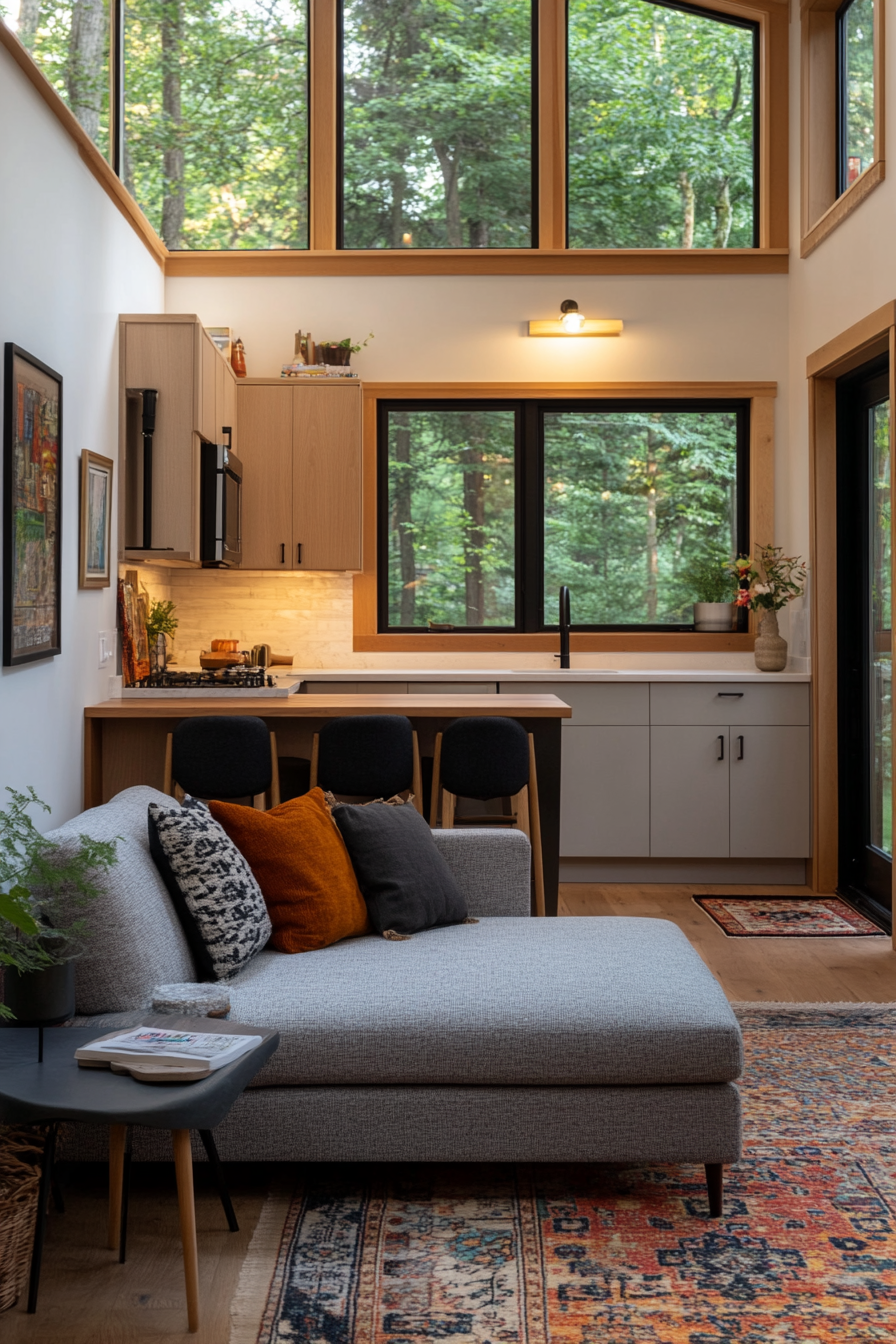
Light colors and mirrors can create an illusion of more space in a tiny home. Light, neutral colors on walls, floors, and furniture help to reflect light and make the space feel larger and more open. Mirrors, strategically placed, can also enhance this effect by reflecting light and views, giving a sense of depth.

Opt for whites, beiges, light grays, and pastels for your primary color scheme. These hues not only brighten the space but also create a calm, cohesive look. You can add pops of color with accessories like cushions, rugs, and artwork to keep the space from feeling too sterile.
Mirrors can be placed opposite windows to maximize natural light or on walls to make narrow spaces feel wider. Consider mirrored furniture or decorative mirrors as statement pieces. By playing with light and reflection, you can significantly enhance the feeling of spaciousness in your tiny home.
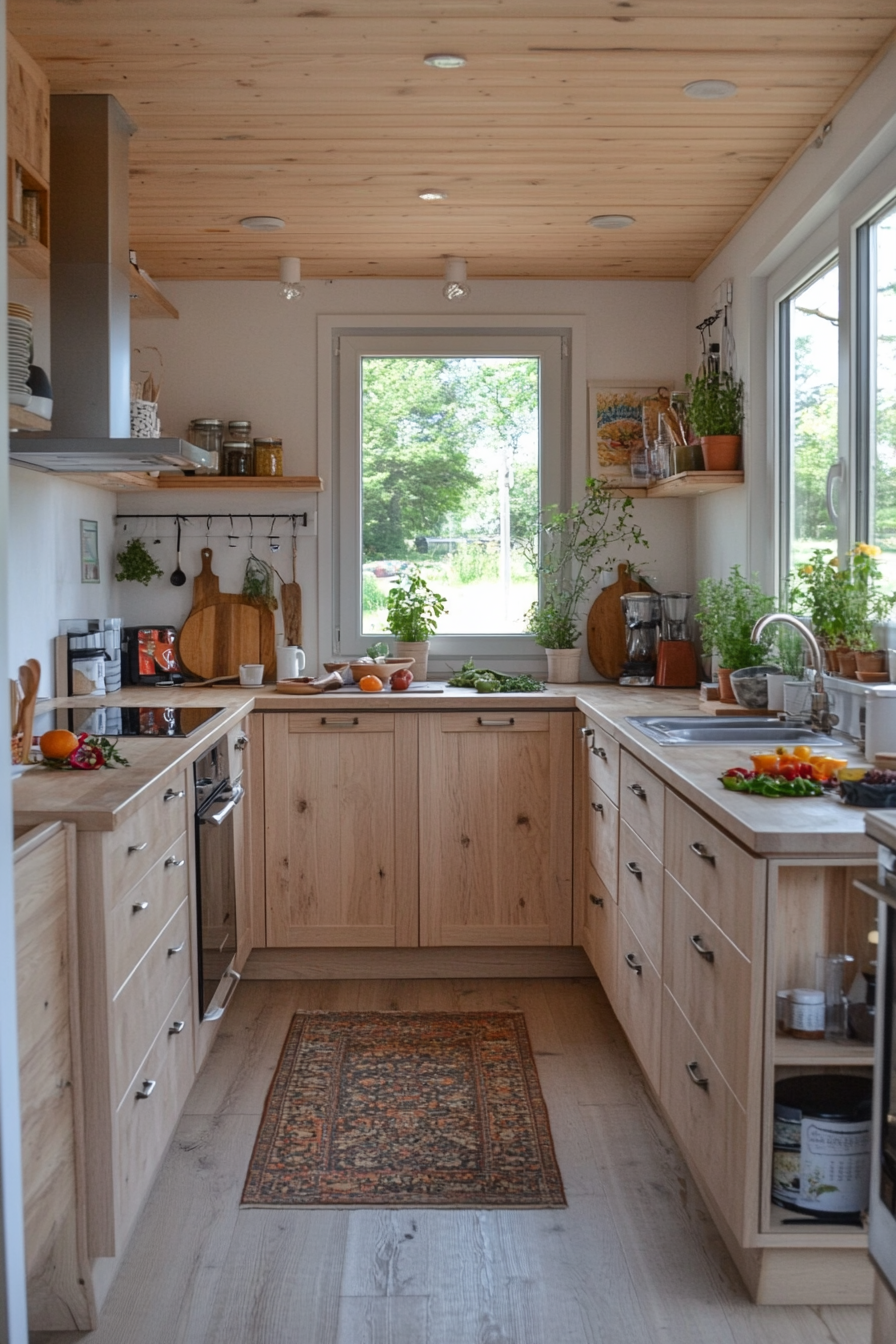
7. Choose Furniture with Legs

Furniture with legs can make a small space feel more open and airy by allowing light to flow underneath and creating a sense of movement. This is particularly effective in tiny homes where floor space is limited. Look for sofas, chairs, and tables with exposed legs to maintain a feeling of openness.

Legged furniture gives the illusion of more space because it doesn’t block the visual continuity of the floor. This trick is especially useful for items placed near windows or in central areas where you want to avoid a bulky, obstructive look.
Additionally, legged furniture often has a lighter, more streamlined appearance, which contributes to a minimalist aesthetic. It also makes cleaning easier, as you can quickly sweep or vacuum underneath without having to move heavy pieces around. Choose slim, elegant designs to keep the space looking spacious and uncluttered.

8. Install Sliding Doors

Sliding doors are an excellent space-saving solution for tiny homes. Unlike traditional hinged doors, sliding doors don’t require extra space to swing open, making them perfect for tight areas. They can be used for interior doors, closets, and even as room dividers.

Installing sliding doors can free up valuable floor space and make your home feel more spacious. They can be particularly useful in areas like bathrooms, bedrooms, and closets, where every inch counts. Sliding barn doors, pocket doors, and even bi-fold doors can be stylish and functional additions.
Sliding doors also offer design flexibility. They can be made from a variety of materials, including glass, wood, and metal, to match your home’s aesthetic. Frosted or mirrored sliding doors can enhance the sense of light and space, while wooden or painted doors can add a touch of warmth and character.

9. Optimize Under-Bed Storage

Under-bed storage is a practical solution for maximizing space in a tiny home. Utilize this often-overlooked area to store items like seasonal clothing, shoes, or extra bedding. Storage bins, drawers, and vacuum-sealed bags can help keep everything organized and accessible.

Consider investing in a bed with built-in storage, such as drawers or a lift-up mattress frame. These options make it easy to access stored items and keep your bedroom tidy. If you prefer a DIY approach, you can use rolling bins or baskets that slide in and out from under the bed.
Keeping the area under your bed organized can also improve the overall aesthetic of your bedroom. Choose storage solutions that match your decor, such as fabric bins or wooden crates, to maintain a cohesive look. By making use of this hidden space, you can free up room elsewhere in your home for other uses.
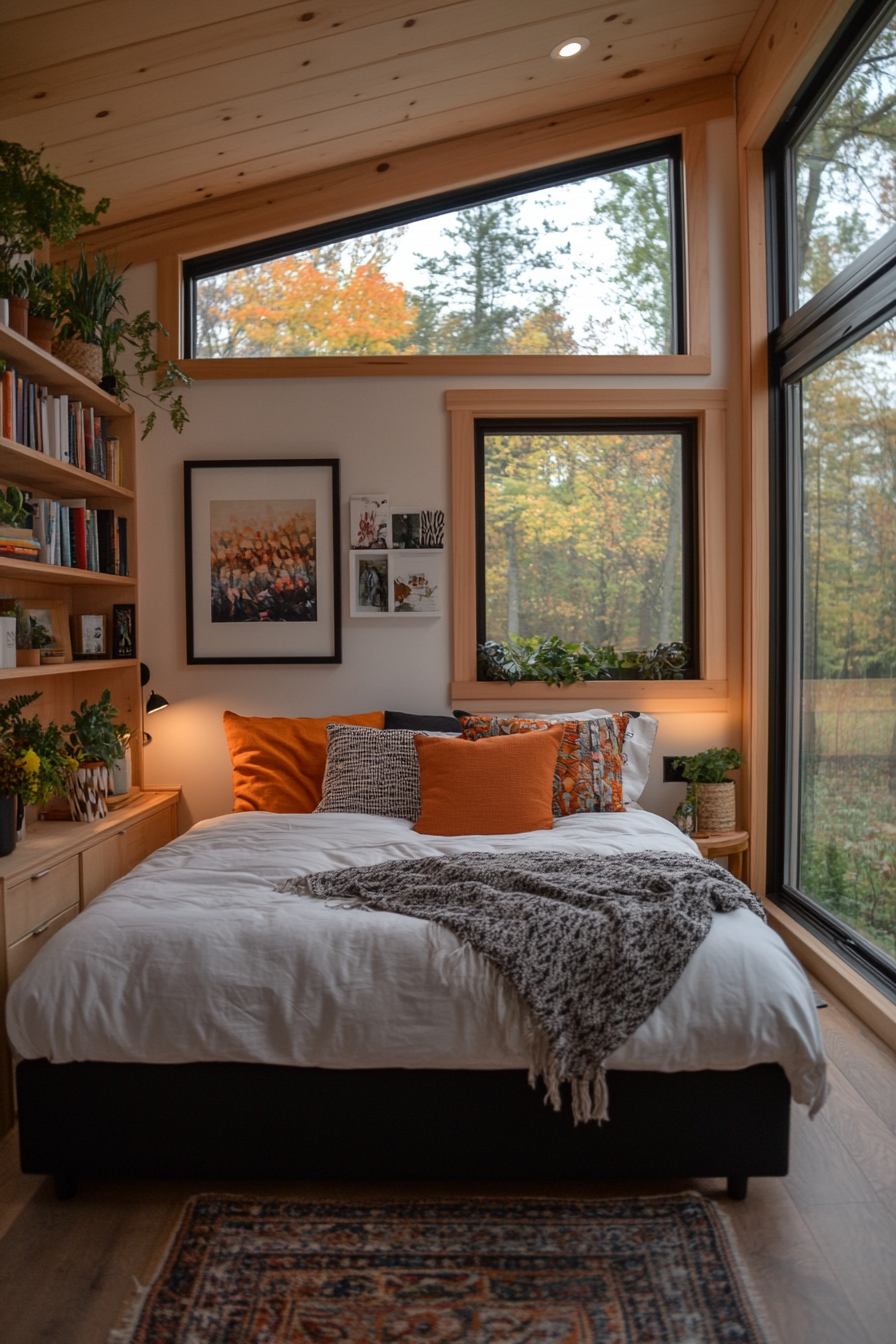
10. Use Hooks and Pegboards

Hooks and pegboards are versatile tools for organizing and saving space in a tiny home. They can be used in virtually any room to keep items off the floor and within easy reach. From kitchen utensils to tools, keys, and accessories, hooks and pegboards provide a simple yet effective storage solution.

In the kitchen, a pegboard can hold pots, pans, and cooking utensils, freeing up drawer and cabinet space. In the entryway, hooks can keep coats, bags, and hats organized. In the bathroom, use hooks for towels and robes, and in the bedroom, for jewelry and accessories.
Pegboards can be customized with various hooks, shelves, and baskets to suit your needs. They can also be painted or decorated to match your home’s aesthetic. By utilizing hooks and pegboards, you can keep your tiny home organized and clutter-free without sacrificing style.
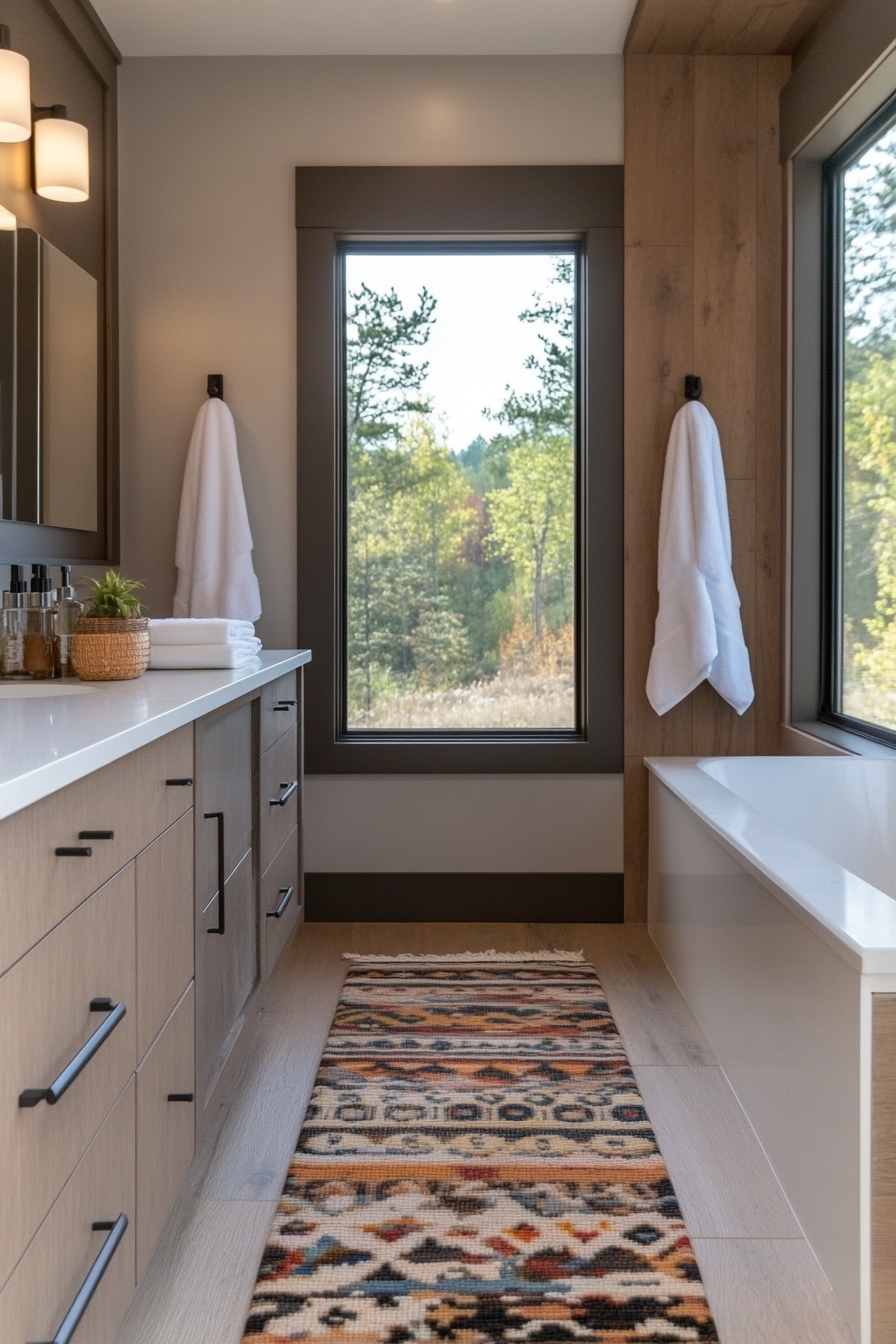
11. Opt for Open Shelving

Open shelving can make a tiny home feel more spacious and airy by eliminating the bulk of closed cabinets. It also allows for easy access to frequently used items and can be a great way to display decorative pieces, adding personality to your home.

In the kitchen, open shelves can hold dishes, glassware, and cookbooks, freeing up cabinet space for less attractive items. In the living room, use open shelves to display books, plants, and decorative objects. In the bathroom, open shelves can store towels, toiletries, and other essentials.
To keep open shelves looking tidy, use baskets or bins to corral smaller items. Arrange items by color or size for a cohesive look, and avoid overcrowding the shelves to maintain an open, uncluttered feel. With the right organization, open shelving can be both practical and aesthetically pleasing.

12. Create Defined Zones

Defining different zones within your tiny home can help make the space feel larger and more functional. Use furniture, rugs, and decor to create distinct areas for living, dining, working, and sleeping. This approach can help you make the most of your space and ensure that each area serves its purpose.

Use rugs and lighting to delineate different zones. A rug can define a living area, while a pendant light can highlight a dining space. Furniture placement is also key; use sofas, shelves, or room dividers to create boundaries between different areas.
By creating defined zones, you can make your tiny home feel more organized and spacious. Each area will have a clear purpose, helping you stay organized and make the most of your limited space. This approach also allows for better flow and functionality within your home.

13. Use Under-Cabinet Lighting

Under-cabinet lighting is a practical and stylish solution for tiny homes. It provides focused illumination for tasks while keeping the main space bright and open. This type of lighting is especially useful in kitchens, bathrooms, and workspaces where good lighting is essential.

In the kitchen, under-cabinet lighting can illuminate countertops, making food preparation easier and safer. In the bathroom, it can provide additional light for grooming tasks. In workspaces, it can reduce eye strain and create a more productive environment.
Under-cabinet lighting comes in various forms, including LED strips, puck lights, and rope lights. Choose the type that best suits your needs and install it to provide bright, focused light exactly where you need it. This small addition can make a big difference in the functionality and ambiance of your tiny home.

14. Install Floating Furniture

Floating furniture, such as wall-mounted desks, shelves, and vanities, can help create the illusion of more space in a tiny home. By keeping the floor clear, these pieces contribute to an open, airy feel while providing the functionality you need.

A wall-mounted desk in the living room or bedroom can serve as a workspace without taking up valuable floor space. Floating shelves in the kitchen, bathroom, or living room can hold essentials and decorative items without adding bulk. A floating vanity in the bathroom can make the space feel larger and easier to clean.
Floating furniture also offers a sleek, modern look that can enhance the overall aesthetic of your tiny home. Choose pieces that match your decor and install them at comfortable heights to maximize both style and functionality.

15. Use Convertible Furniture

Convertible furniture is a must-have for tiny homes, offering multiple functions in a single piece. From sofa beds to fold-out desks and transforming tables, these pieces can adapt to your needs, saving space and providing versatility.

A sofa bed can serve as a comfortable seating area by day and a cozy bed by night, eliminating the need for a separate guest room. A fold-out desk can provide a workspace when needed and then fold away to free up space. A transforming table can go from a coffee table to a dining table, accommodating guests without taking up permanent space.
Convertible furniture is available in a variety of styles and materials, allowing you to choose pieces that match your decor and lifestyle. By investing in furniture that can change its function, you can make the most of your tiny home without sacrificing comfort or style.






